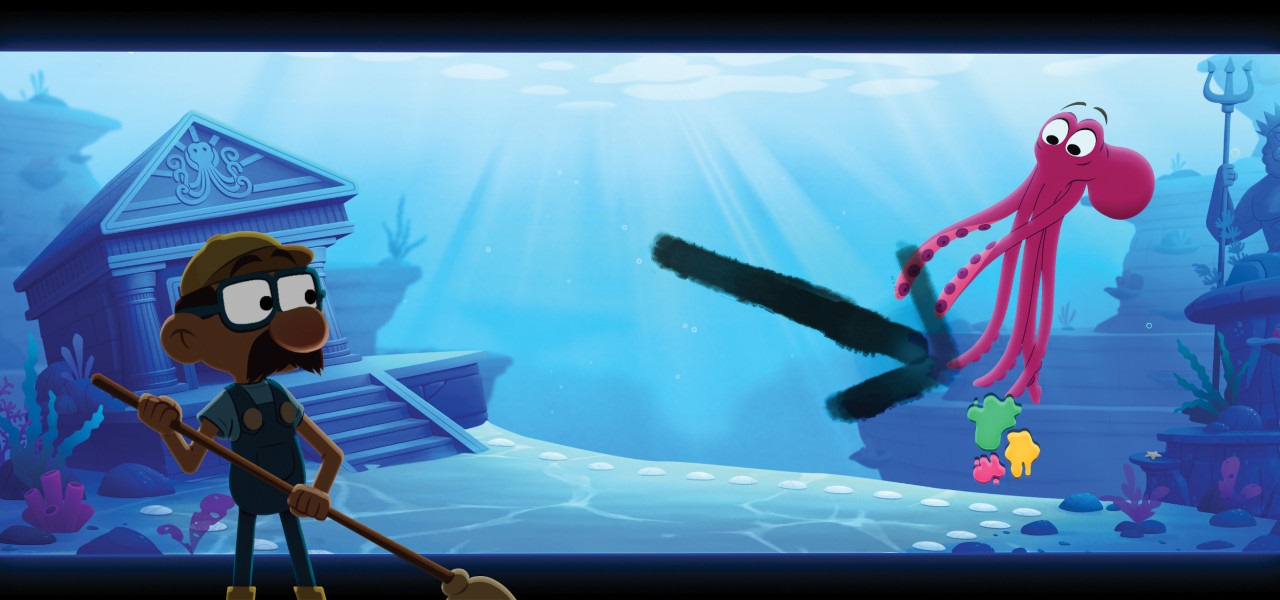
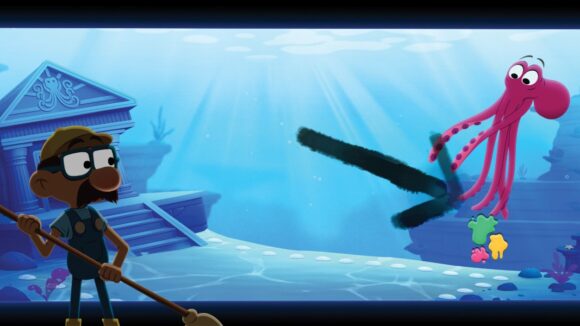
A Deep Dive Into 3D Animation Production With ‘Ink’ Directors Joost Van Den Bosch And Erik Verkerk
Ka-Ching Cartoons Animation Studio’s Ink is a charming two-minute short aimed at kids and family audiences. The film was produced in stereoscopic 3d and meant to be seen in theaters by audiences wearing glasses, but the pandemic put the kibosh on those plans, and the film instead did the festival circuit screening mostly in 2d.
Based in Rotterdam, Ka-Ching Cartoons is helmed by Joost van den Bosch and Erik Verkerk, who recently talked us through the process of creating a 3d (and we mean 3d, not cg) animated short.
Ink was financed by the Dutch Ultrakort program, created and supported by the Dutch Filmfund, Vue Cinemas, the NFO, and Fonds21. Each year, the program backs five or six short films with a budget of 50,000 euros (approximately Usd$54,000). Selected projects have roughly nine months to produce a two-minute short that is then screened at mainstream and arthouse cinemas ahead of popular feature films. The goal is to introduce the Dutch public to animation created by their countrymen.
Knowing the format and length of the short, as well as the kinds of people who would be seeing it, the Ka-Ching team started brainstorming. According to van den Bosch and Verkerk:
The idea of the film came purely out of the technique that we wanted to use. In the 50 or 60 films that were made within the program, there was not a single stereoscopic film. And because they would screen ahead of blockbusters in the cinemas, there would be a good chance that the audience would already have 3d glasses ready for the main film. We like stereoscopy, especially in combination with 2d animation, so we knew we wanted to do something with this technique.
The Ka-Ching team wasn’t new to making 3d projects, either. In 2008, the company made the short film The 3D Machine, an 8-minute 2d short in anaglyph 3d that was later bought by Nintendo to screen on their 3DS handheld. The short became a hit on their console, so Nintendo financed a miniseries of The 3D Machine in 2012.
Before Ink was even an idea, the Ka-Ching team started brainstorming their favorite parts of stereoscopic films. Van den Bosch and Verkerk explain:
We liked it if things got close to your face, but we also liked it when you really felt a lot of depth, if you could look through something in the distance, Like when you look through a window and you see a world behind that window, that works really well. Camera movements often don’t work well for the 3d feeling; the same goes for cut-offs of screen elements; when something stops because the screen ends somewhere, the illusion of 3d space is gone.
With that in mind, the crew knew they wanted to make a short film with no camera movements or cuts which unspools across a single shot. The best way to do that narratively was to tell a story set behind a window with a lot of depth in the background. Van den Bosch recalls:
These ingredients led us to the idea of an animal in an aquarium. The glass would become an obstacle for him, and he would want to do something on the other side. This led us to the story of an octopus who wants to clean something he cannot reach.
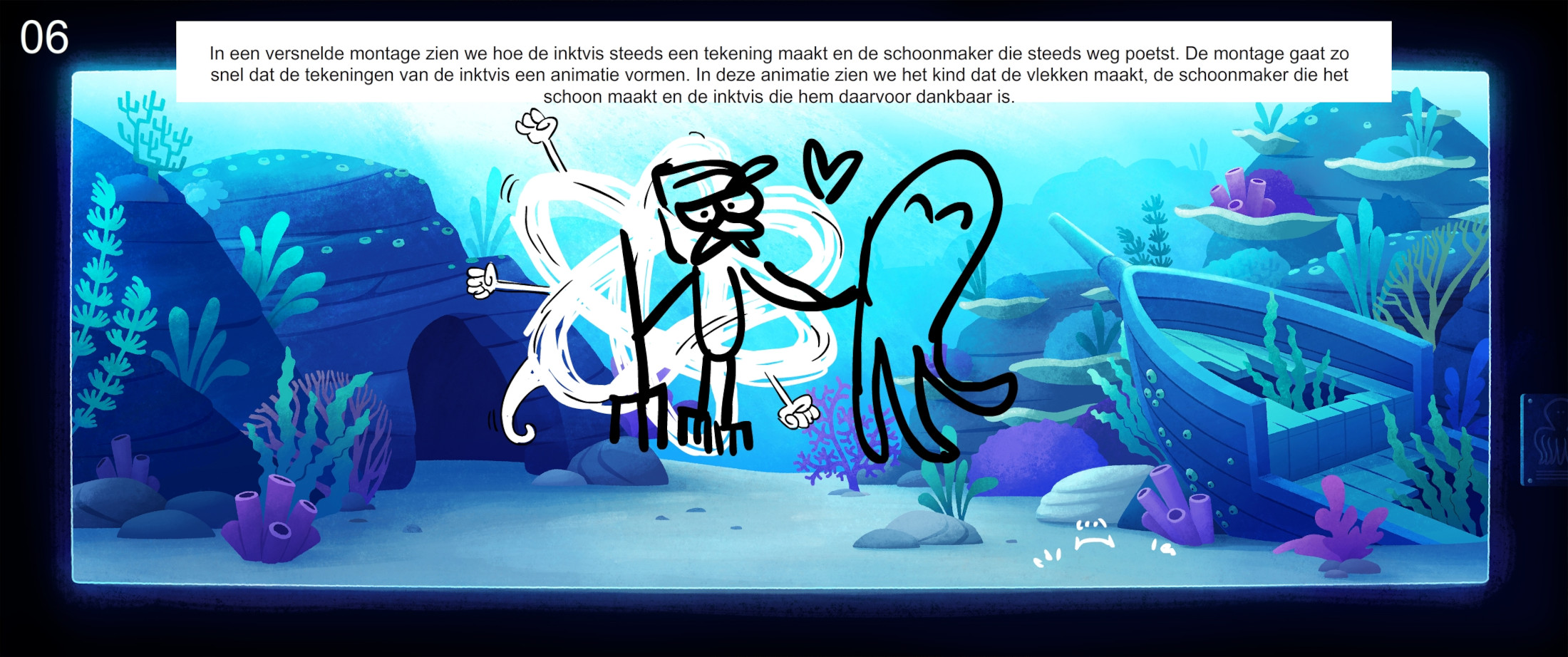
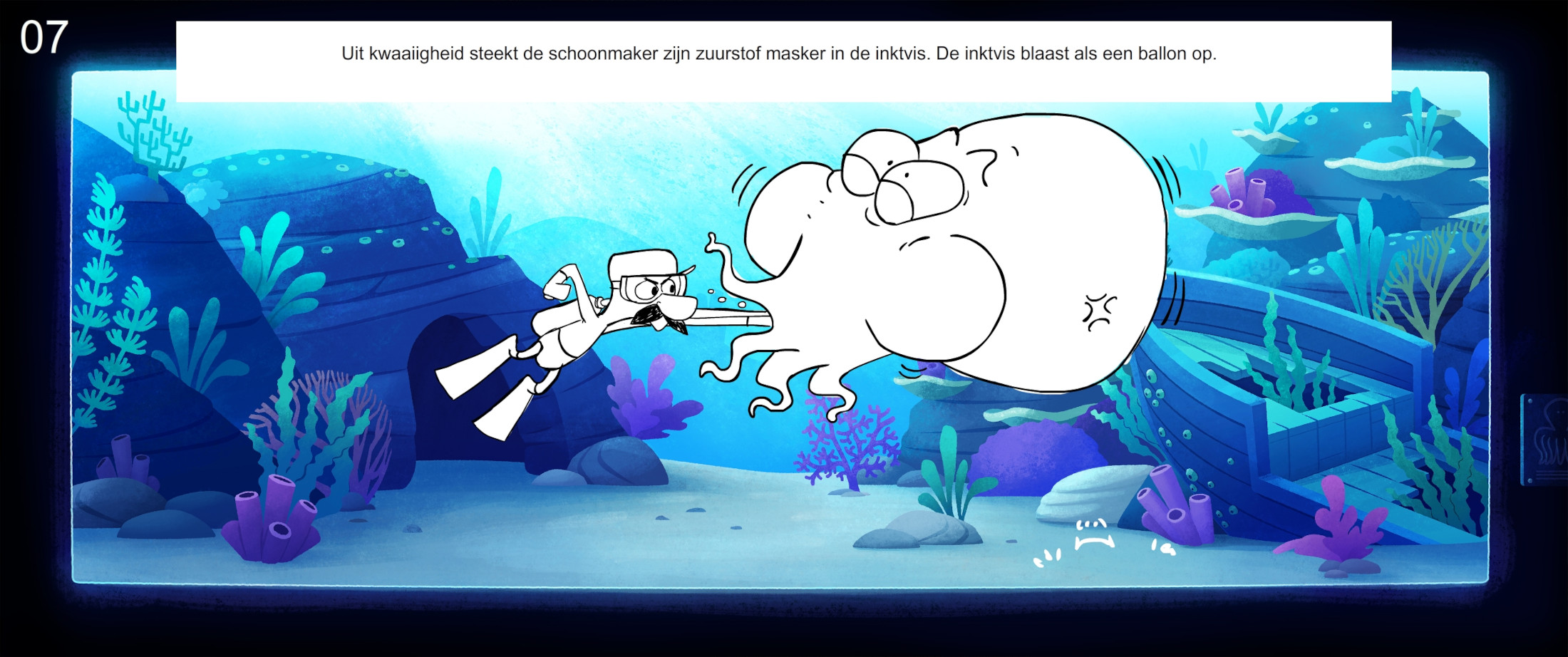
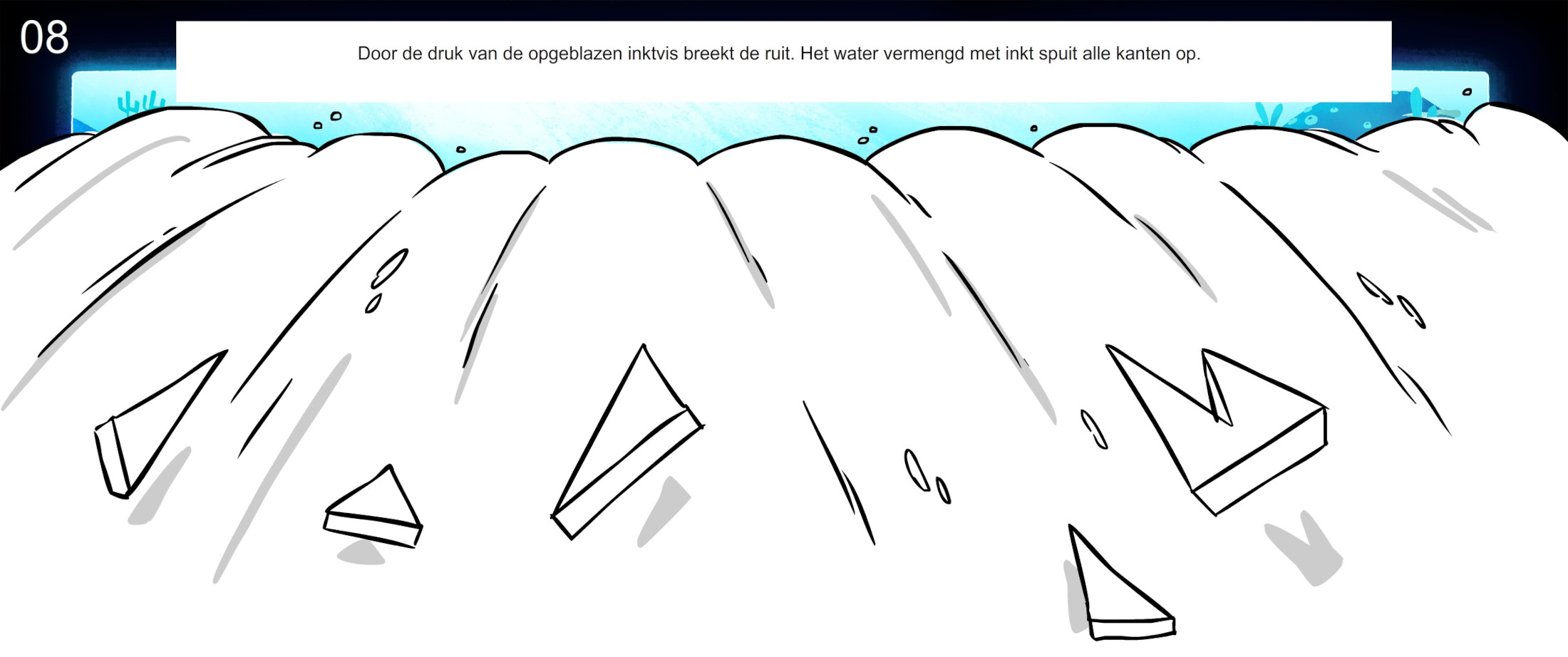
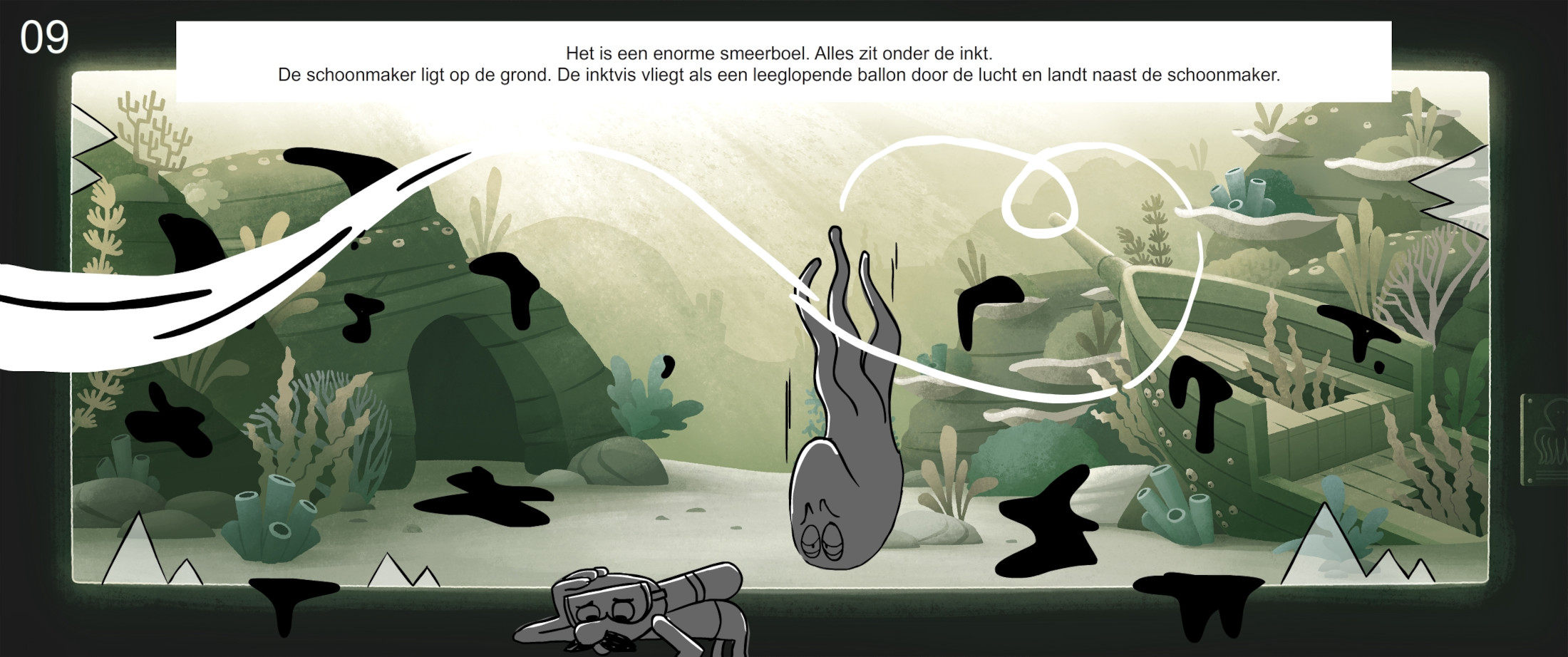
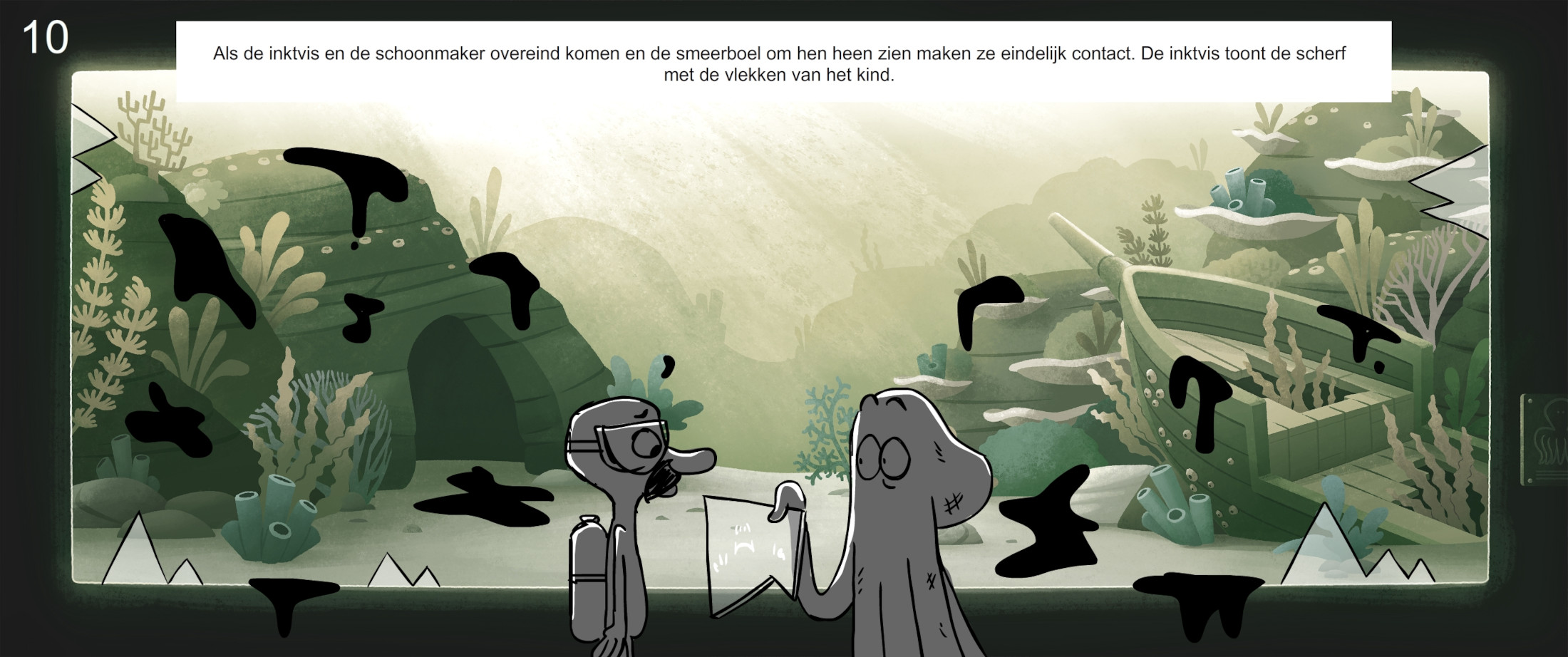
The Ka-Ching team recruited semi-retired Hollywood story veteran Wilbert Plijnaar to help with the film’s narrative. The studio also enlisted illustrator Jelle Gijsberts to help with the design and art direction of the film. Digna van der Put animated the octopus in TVPaint.
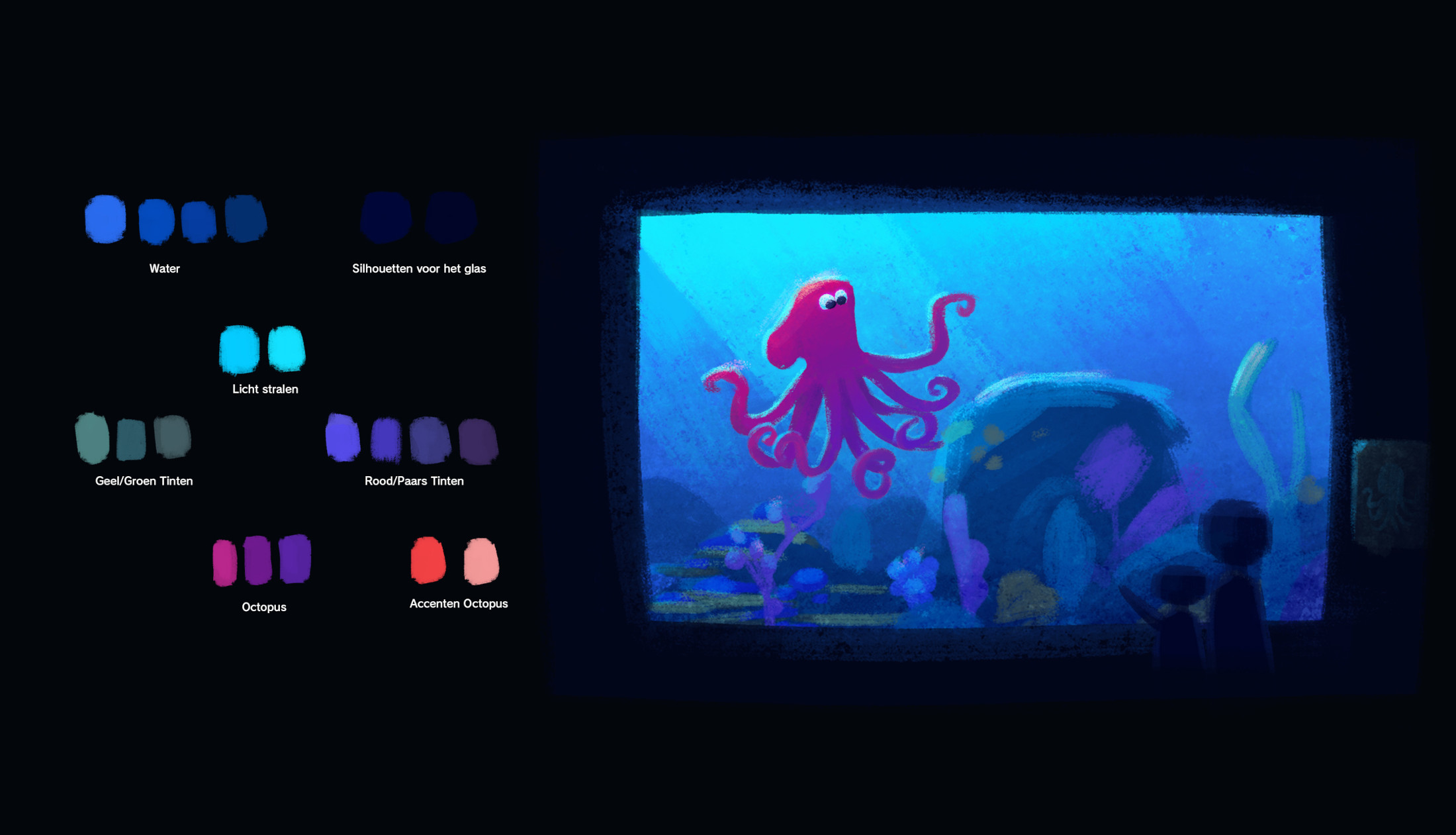
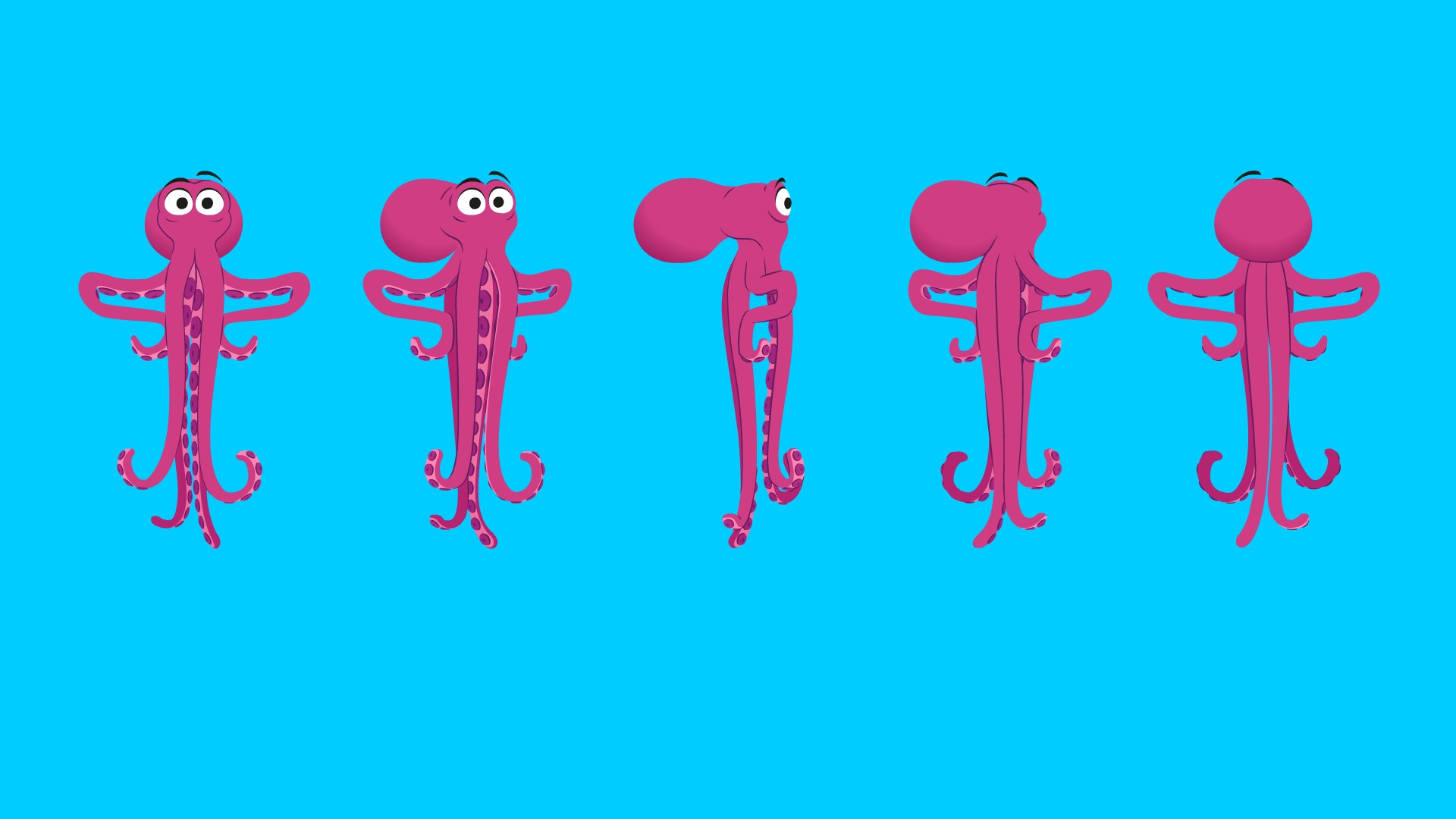
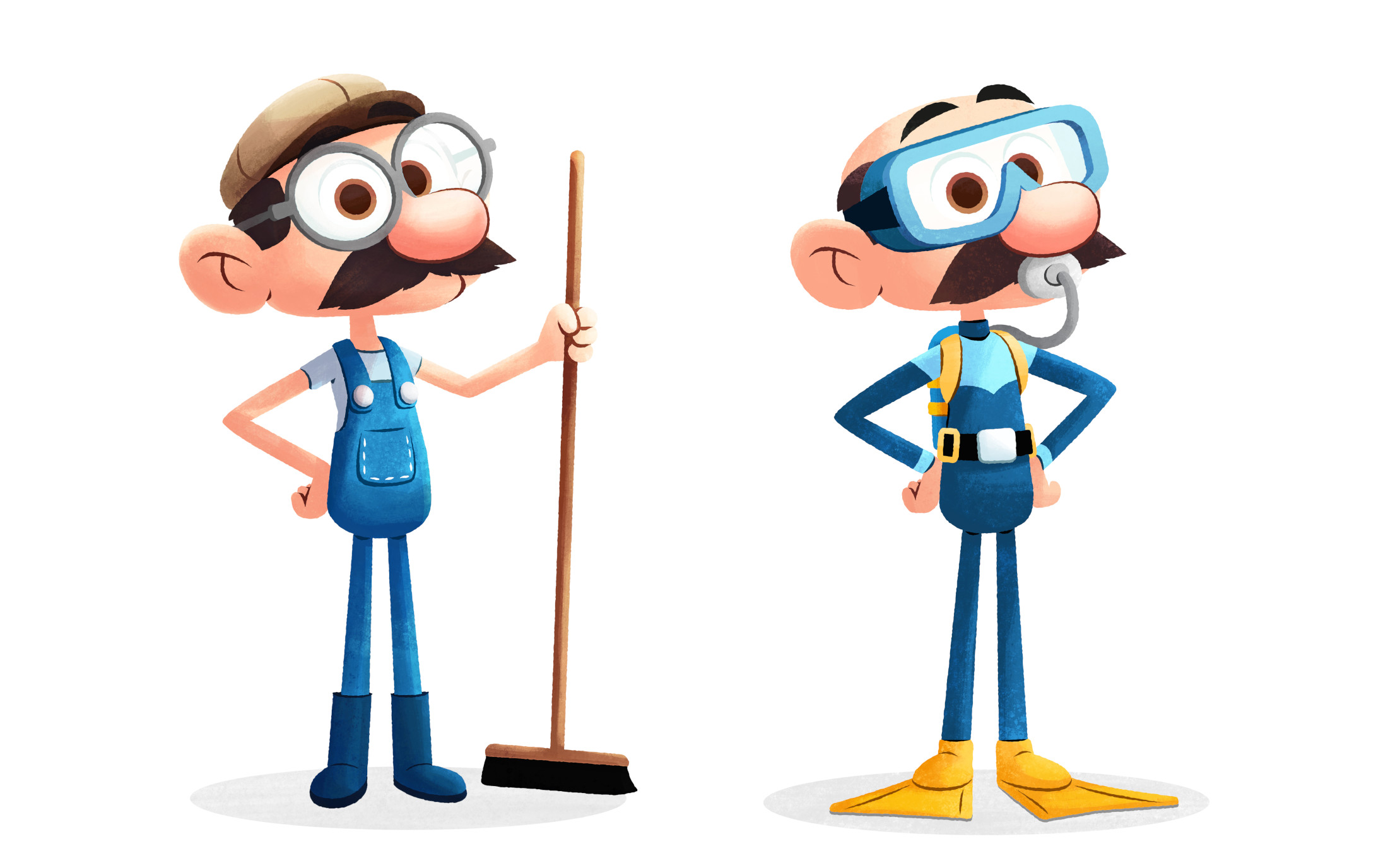
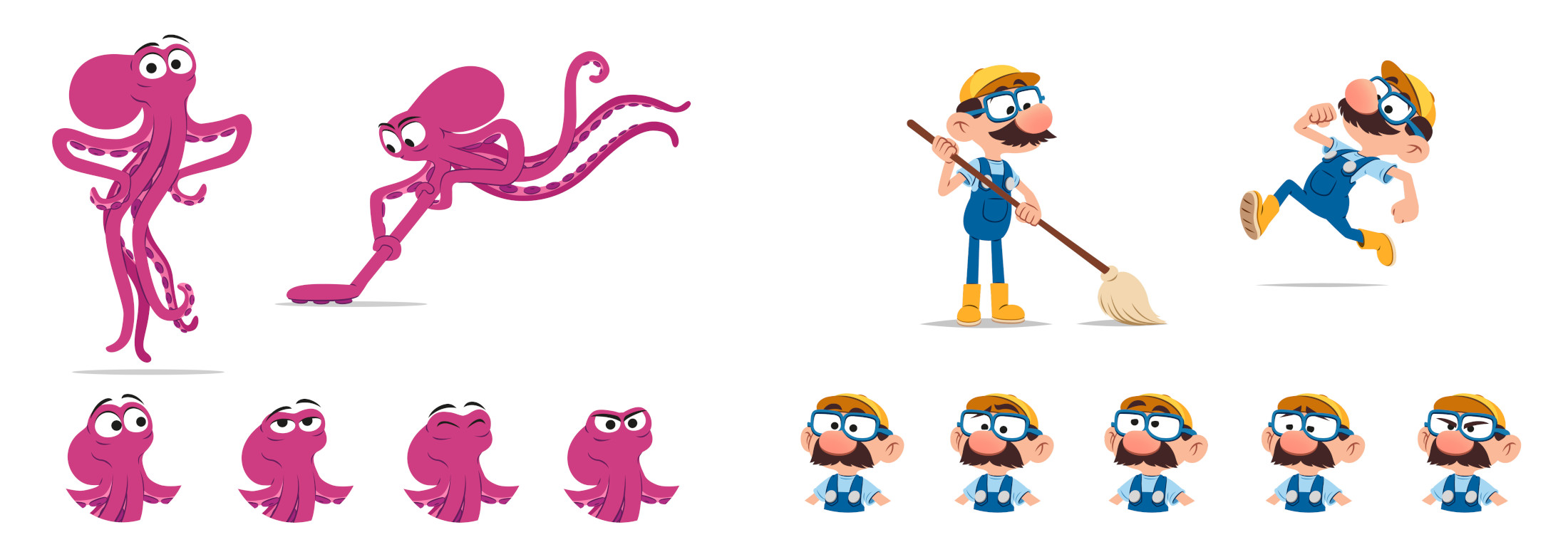
The other fish, the young girl, and the cleaner were animated in Adobe Animate by Geoffrey Armfield. Cleanup of the octopus was also done in Animate so the characters would share a visual fidelity. That also allowed the crew to use some cut-out elements on the hand-drawn octopus.
Visual effects like bubbles, water, glass, etc., were all drawn afterward by Thijs Viegers.
The film was composited in a 3d environment in Adobe After Effects, where artists rendered two cameras for the stereoscopic effect. The compositing team did their work on a 3d monitor while wearing 3d glasses. Van den Bosch and Verkerk said:
It was an extra step in production, so it took us longer and cost more money. But we were happy we did it. After all, the whole idea came out of using this technique.
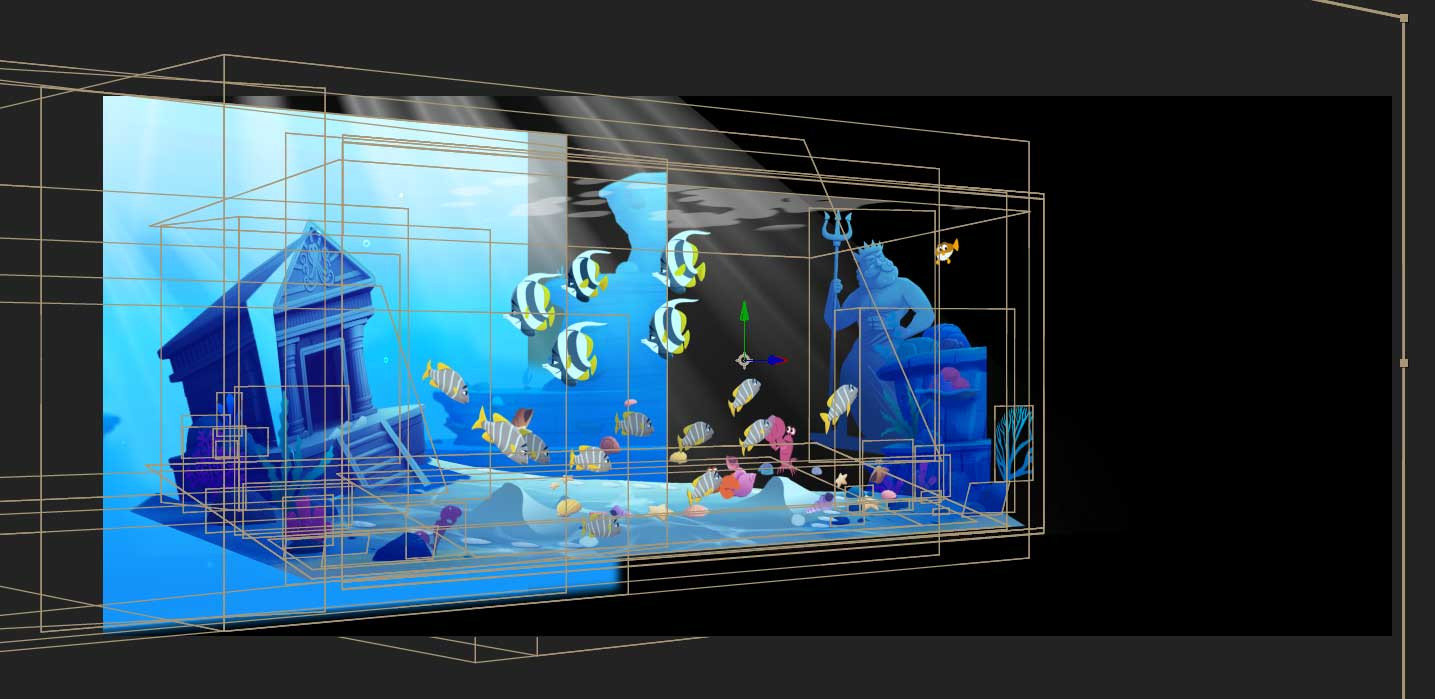
Storyboarding and development began in November 2019 and the film was finished in June 2020. Sadly, a week after Ink began screening in front of major commercial films in cinemas, all the Netherlands’ cinemas closed because of the pandemic. Van den Bosch and Verkerk remember the disappointment of those canceled screenings, compounded by a Covid-19-hampered festival run:
We sent it to lots of festivals, and it got selected by more than 200. But most were held online due to the pandemic. So, even though the film was born out of the idea of being a stereoscopic 3d film, almost everyone watched the 2d version. Even some of the festivals that didn’t take place online didn’t want to use 3d glasses because then they’d have to hand out and collect the glasses, which was a risk during Covid.
Ka-Ching is currently busy with numerous other projects, including the production of two hand-drawn feature films based on famous Dutch children’s book stars Dikkie Dik and Tummy Tom. Both films are animated in TVPaint and due for theatrical release in 2024. The company also recently co-produced Nicolas Keppens’ latest film Beautiful Men, which is currently on the festival circuit and will screen in competition at Annecy in June.
INK Credits:
Written, produced and directed: Erik Verkerk & Joost van den Bosch
Animation: Ka-Ching Cartoons Animation Studio
Digna van der Put
Geoffrey Armfield
Elian van der Heiden
Tijmen Raasveld
Elysa Ketelaars
Storyboard & Additional Story: Wilbert Plijnaar Art Direction & Design Jelle Gijsberts
Effect Animation: Studio Plumeau
Thijs Viegers
Edit, Compositing & Stereoscopie: Erik Verkerk & Joost van den Bosch
Music ‘Zorba’s Dance’ -Mikis Theodorakis. Sony /ATV music publishing BV Music; re-arrangement and recording Audiocult
René Merkelbach
Tim Langedijk
Soundeffects, Foley & Mix Bob Kommer Sound Studios
Jeroen Nadorp

.png)